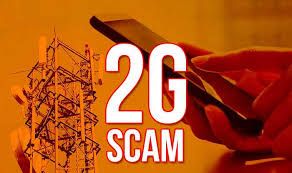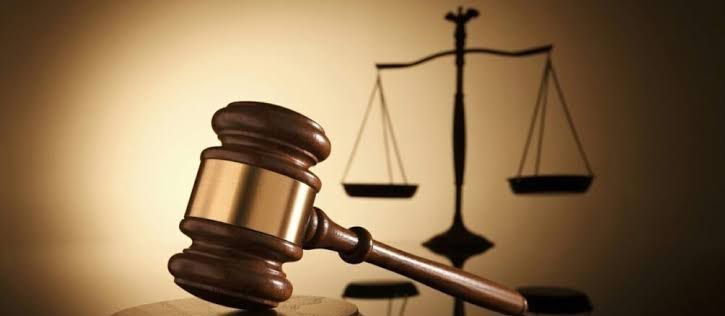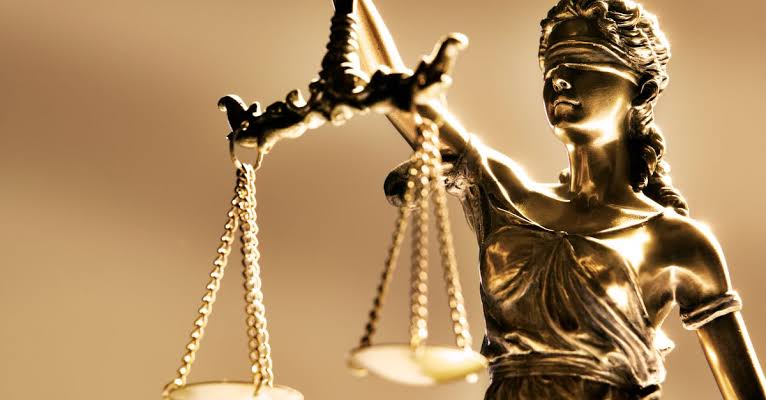Author: Ritika Gupta, a student at Institute of Law Kurukshetra University Kurukshetra.
This article deals with the scam case in the telecommunication sector of India which is known as 2G spectrum case or 2G spectrum Scam.This is one of the largest political scandals in the India’s history which involves the allocation of 2G telecommunication spectrum licences in 2008 at undervalued prices.This article basically focuses on the facts of the case, accused, allegations judgement and analysis of the case.
*Introduction
The 2G Spectrum Case came to light in 2010. It is one of the landmark corruption and political scandals in India. It revolves around the allocation of 2G telecommunication spectrum licenses in 2008 at prices considered to be much lower than the market value. This scam case highlighted many issues of corruption, procedural violations and financial losses to the State exchequer.
*Facts of the Case
In 2007, When Congress was in active government, Mr. A. Raja was appointed as the Communication and IT Minister who was the leader of Congress. He allocates 122 licenses of 2G spectrum in the year 2008 with the fixed price option and he made a condition which favoured some telecom companies. He sold the licence at a very low prices which were 2001 prices and without any rules and regulations. Not only this, he also reduces the deadline of application of 2 G spectrum licences from 1 October 2007 to 5 September 2007 and due to the reduction of date many companies were not able to apply for the same. Also,on the date of issuance of licence which was on 10 January 2008, he gave only few hours to the companies for the submission of the cheques and other documents. The companies which were favoured by the A. Raja were already ready with their cheque and other documents. The Comptroller and Auditor General of India on 16 November, 2010 gave their report in which it is mentioned that A.Raja did not took any advice from the Law and Finance Minister before allowing the licences.
*Allegations Involved
•Low Pricing: The Spectrum were sold at 2001 prices which are very much underpriced than the market price of the year 2008 which leads to the significant under- valuation and a loss of approximately Rs. 1.76 lakh crore to the government.
•No Procedures Followed: The licence were reportedly awarded on the first come, first served basis rather then by the auction process, which is generally followed to ensure competition and fair pricing. The dates reduced the time for the submission of the application without giving any prior information.
•Eligibility Criteria: Several companies that were awarded licences did not meet the eligibility criteria required to hold that licence. Many companies also used fake documents to meet with the eligibility criteria.
•Selective Allocation: The licenses that are granted to the companies which they have political connections and due to this favouritism they ignore many deserving applicants.
•Bribery Allegations: The bribery allegations were also put on the accused that was exchanged to facilitate those allocations which involves many high ranking officials.
•Ignored Recommendations: The recommendations of the Telecom Regulatory Authority of India(TRAI) for the fair and transparent auction for granting licence was completely ignored.
*Accused Involved
In the Charge Sheet, CBI alleged 18 people for the 2G Spectrum Scam which are named below:
• Andimuthu Raja : He was the Telecom Minister at that time and was accused of being the head and mastermind behind the Scam. He allegedly manipulated the rules and procedures to benefit certain companies with some political connections.
• Kanimozhi Karunanidhi: He is the Member of Parliament from the DMK party (Dravida Munnetra Kazhagam). He was accused due to her association with Kalaignar TV, which received funds allegedly from the favoured companies.
•Siddharth Behura: He was then the Secretary of the Department of Telecommunication. He was allegedly assisted Raja in the allocation process.
•RK Chandolia: He was the A.Raja Private Secretary. He allegedly involved in the decision making process and allocation of spectrum licences.
•Karim Morani: He was the Director of Cineyug Films. He contributed in the transfer of funds between companies and Kalaignar TV.
•Corporates Executives: There are many corporate executives that are accused in this case which are named as follows:
•Shahid Balwa: He was the promoter of Swan Telecom.He was accused of conspiring with the government officials.
•Vinod Goenka: He was the director of Swan Telecom. He was also accused of being involved in the scam and favoured from the underpriced licence.
•Sanjay Chandra: He was the Managing Director of Unitech Wireless. He was accused of benefited from the scam due to undervalued spectrum.
•Gautam Doshi, Surendra Pipara and Hari Nair: They are executives of Reliance ADA(Anil Dhirubhai Ambani) group. They are allegedly involved in Swan Telecom, which was considered a front for Reliance ADA group’s telecom operations.
•Media Professionals: Media professionals were also accused that are named as follows:
Nira Radia
Barkha Dutt
Vir Sanghvi
•Companies Favoured: These are those accused companies which are favoured while granting licences at below market prices. The companies involved are named as:
Allianz Infra, Swan,Reliance Communication, Unitech Builders, Loop Telecom, Vodafone Essar, Tata Communication, MTS, S Tel, Videocon Telecommunication.
*Authorities that plays role in this Case
1. Role of CAG
The Comptroller and Auditor General of India (CAG) plays a significant role in the 2G spectrum case. They finished the report by March 2010.
•Audit Reports: The CAG conducted an audit of the Department of Telecommunications(DOT) regarding the allocation and rates of the 2G Spectrum licences. The CAG report which was presented in 2010 in the Parliament covered many irregularities in the allocation process.
•Loss Estimation: The CAG report was the estimate of the financial loss to the exchequer due to the irregularities in the allocation of the licenses. The report estimated the loss of approximately Rs. 1.76 lakh crore.
•Violations are addressed: The CAG report identified several violations and procedural lapses in the process of allocation of the licence. It pointed out that spectrum licences were issued at the 2001 prices in 2008. This report also addressed that that the guidelines related to the allocation were not followed.
•Leads to Investigations: The findings of the CAG report leads to series of investigations and legal actions. The Central Bureau of Investigation(CBI) and other enforcement agencies launched in depth investigations into this matter.
•Leads to Debate: The CAG report leads to widespread debate about the corruption and transparency in the allocation process. It leads to discussions on the need of reforms in the telecom sector and also leads to the observation of the goverment procedures.
In short, majorly the CAG findings helped alot in the legal proceedings that took place in the Supreme Court.
2. Centre Public Intrest Litigation ( Petitioner)
It is a non governmental organization(NGO) that filed the Public Interest Litigation in the Supreme Court of India in 2010 alleging that large scale irregularities and corruption was done in the allocation of the 2G licences by the Department of Telecommunications.
3. CBI (The Central Bureau of Investigation)
The Central Vigilance Commission in 2009, ordered the CBI to investigate the matter of the allocation of the licences. In 2011, the CBI filed it’s first chargesheet, in which many irregularities were shown in the allocation process and A. Raja was accused.
*Judgement of the Court
•Supreme Court Judgement (2012)
On February 2, 2012, The Supreme Court of India delivered a landmark judgement by cancelling 122 telecom licences issued on or after January 10, 2008. The Supreme Court also held that that the procedure followed for the allocation of 2G spectrum licences was ‘arbitrary and unconstitutional’ and also emphasized that it violated the principles of fairness and transparency.
The Supreme Court also directed the Telecom Authority of India (TRAI) to make fresh or new recommendations for the allocation of 2G spectrum licences. It also directed that the allocation should be done by the auction process and not on the first come and first serve basis to ensure transparency in the process.
•The Central Bureau of Investigation (CBI) Special Court Judgement
The case was heard by a special CBI court in Delhi presided by the Judge O.P Saini. On December 21, 2017, the special court delivered it’s judgement by acquitting all the accused in this case from all the charges. The court held that the prosecution had failed to prove the charges of criminal conspiracy, cheating and corruption beyond a reasonable doubt. The court also held that the evidence presented in the court was not sufficient to prove the charges of the accused.
*Appeals
The CBI and Enforcement Directorate filed many appeals against the acquittal of the accused in the Supreme Court and Delhi High Court.
Till now, the appeals have not resulted in any overturning judgement. This case remains a controversial and debated issue with ongoing discussions on the implications of the judgement of the Court.
*Conclusion
The 2G spectrum case, with the dual phases of judicial outcomes, underscores the complexity and also the challenges faced in addressing the high-profile or largest corruption cases in India. The Supreme Court’s cancellation of licenses had marked a significant step towards enforcing legal and procedural transparency, while the acquittals by the special court highlighted the shortcomings in the investigation and prosecuting complex economic offences. The ongoing appeals that are filed continue to keep the case relevant in the public and legal discourse.
*Frequently Asked Questions
1. What were the key allegations in the 2G spectrum case?
The main allegations are of the corruption, conspiracy and favouritism in the allocation of the 2G licences.
2. What was the outcome of the case?
In 2012, the Supreme Court cancelled all the 122 licences that had been awarded. Several people were charged and put on trail. In 2017, the special Court appointed for this case acquitted all the accused, due to lack of evidence.
3. What is 2G spectrum?
It refers to the radio frequency bands used for the 2nd generation of mobile networks.
4. What are the impacts of this case?
This case leads to many policy changes and reforms in the India’s telecom sector. The auctions were now favoured for granting licences.
5. Who were accused in this case?
In this case, 18 people are accused which includes the A. Raja, many political leaders, several telecom companies and corporate executives.
*References





